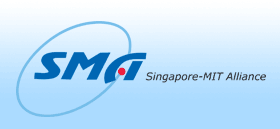Project Abstract:
Drilling and tapping processes are the most common processes
in any manufacturing environment. These processes require a
metal-working fluid (commonly known as coolant). It is flushed
out at high pressure to remove the heat generated from the friction
between the tool and workpiece. This is to ensure good surface
finish on the workpiece and longer cutting tool life as well as to
remove the chips formed during the process. As a result of this,
coolant tends to get trapped in the tapped and/or drilled holes
especially in the blind holes. This is more severe in casting parts
which have higher permeability caused by porosities; an inherent
property of die casting. Consequently, unsightly oil stains are being
observed around the blind holes.
This study focuses on removing the source of the stain, the
phenomenon which causes the oil oozing out of the blind hole,
and the entire cleaning process for removing the trapped oil.
The many parameters that could have significant effects on
improving oil removal were studied through laboratory testing,
design of experiments (DOE) and evaluations. With these results,
the cleaning processes will be optimized to reduce oil stains. In
addition, alternative cleaning technologies used by the same
industry or other industries were studied. |


